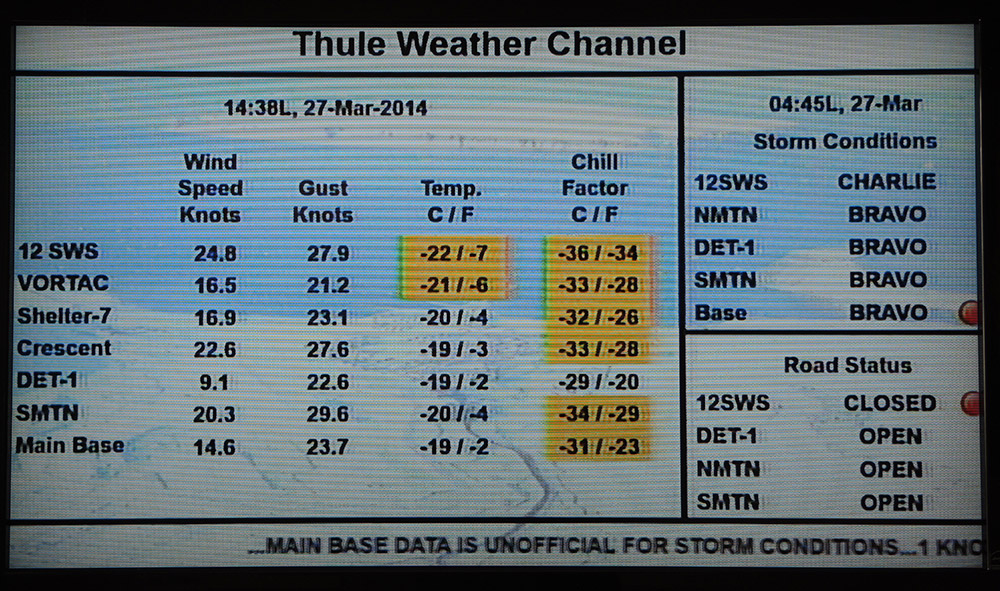By George Hale, IceBridge Science Outreach Coordinator, NASA Goddard Space Flight Center
For people living and working at Thule Air Base, Greenland, weather is a near-constant concern. From mid-September to mid-May – the winter season – Thule can be subject to dangerous storms. A low pressure system off the coast can bring winds down off of the ice sheet, which pass through the valley Thule Air Base sits in.

These high winds cause extreme cold and the reduced visibility caused by blowing snow can quickly make it easy to get lost even a few feet away from a building. Because of these dangers, Thule Air Base operates under a set of storm conditions that reflect temperature and visibility and restrict movement around the base accordingly.

Storm Conditions Normal and Alpha – The first of these conditions are Normal and Alpha. Neither of these translates to immediate danger, though under Alpha conditions personnel should prepare for the weather to deteriorate quickly.
Storm Condition Bravo – Pedestrians are required to travel in groups of two or more and stay on approved roads. Those traveling in vehicles should have a radio to communicate.
Storm Condition Charlie – Non-essential buildings close and personnel are to return to quarters using either dedicated vehicles or one of the base shuttles or taxis.
Storm Condition Delta – Under this condition everyone has to stay in the building they are in and only emergency vehicles can operate. During the 2011 Arctic campaign the IceBridge team had to wait out a Delta storm. https://blogs.nasa.gov/icebridge/2011/03/22/post_1300818034227/
